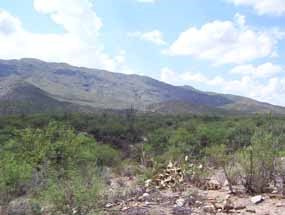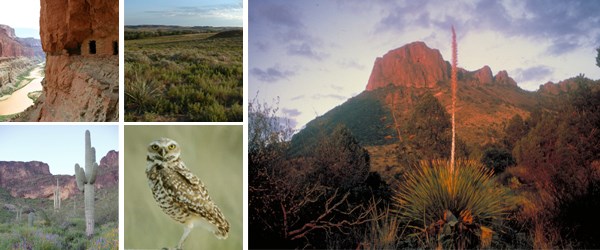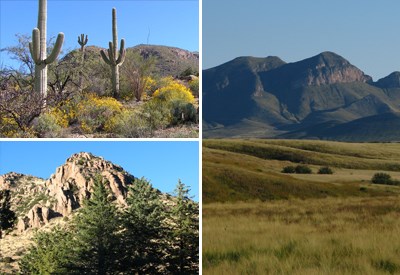
NPS photo/L. Bolyard Saguaro National Park is composed of two distinct districts: The Rincon Mountain District and the Tucson Mountain District. The Tucson Mountain District lies on the west side of Tucson, Arizona, while the Rincon Mountain District lies on the east side of Tucson. Both districts were formed to protect and exhibit forests of their namesake plant: the Saguaro Cactus. Most people think of Saguaro National Park as being a desert park. True, the lower elevations of the park encompass Sonoran Desert Vegetation, but there is much more to Saguaro National Park than just cacti. The Tucson Mountain District of Saguaro National Park ranges from an elevation of 2,180 ft to 4,687 ft and contains 2 biotic communities, desert scrub, and desert grassland. Average annual precipitation is approximately 10.27 in. Common wildlife include the coyote, Gambel’s quail, and desert tortoise. The Rincon Mountain District of Saguaro National Park ranges from an elevation of 2,670 ft to 8,666 ft and contains 6 biotic communities. The biotic communities (starting from the lowest elevation) include desert scrub, desert grassland, oak woodland, pine-oak woodland, pine forest and mixed conifer forest. Average annual precipitation is approximately 12.30 in. The Rincon Mountains peak at a considerably higher elevation than the Tucson Mountains, therefore there are more biotic communities and increased plant and wildlife diversity. Because of the higher elevation in the Rincons, animals like the black bear, Mexican spotted owl, Arizona mountain king snake, and white-tailed deer live in this district. 
Courtesy of Learning Center for the American Southwest The Learning Center of the American Southwest is a partnership dedicated to understanding and preserving the unique resources of the American Southwest through science and education. For more information about the natural and cultural resources of the region and about scientific activities underway check out the Learning Center of the American Southwest. 
NPS photo |
Last updated: May 6, 2025
